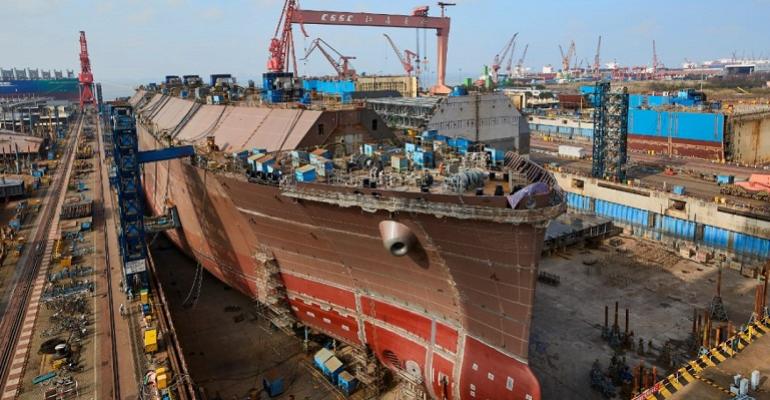With owners having racked up some $47 billion in investments in 18 months the race to order LNG newbuildings is set to continue. The figure for invesment in LNG carriers just eclipsed containerships with owners pumping in an estimated $46 billion for newbuildings in that sector.
Energy security, increasing cargo volumes, replacement demand, and infrastructure requirements, are key factors underpinning record investment in LNG carriers, according to analysis by Clarkson Research.
Despite dramatically higher new ship prices – up from $211m for a standard 174,000 m3 vessel at the start of 2022 to $261m today – LNG owners are pinning down the few remaining slots that are still available between now and late 2027.
The orderbook now stands at 331 vessels, 51% of fleet capacity, the analyst said in a recent report. One-year time charter rates for a 160,000 m3 dual-fuel diesel-electric vessel have remained consistently above $100,000 per day over the last 12 months. End-June rates stood at $120,000, Clarkson said.
New LNG contracts placed this year total 30 carriers with a value of $7.7 billion. But more orders are likely as four newcomers on the construction scene book more deals. The ships will be needed because LNG trade is set for rapid expansion over the coming years as more capacity comes on stream.
The pace is likely to accelerate from about 4% per annum in 2023-24 to as much as 10% in 2025-27, the analyst said. Rising LNG demand in Asia and the role of the relatively clean hydrocarbon in the energy transition are underlying growth drivers.
Trade in LNG could reach 650m tonnes by 2030, up from around 390m tonnes today, although there are various scenarios. The strength of this energy sector looks certain to continue.
Copyright © 2024. All rights reserved. Seatrade, a trading name of Informa Markets (UK) Limited.
Add Seatrade Maritime News to your Google News feed.  |

